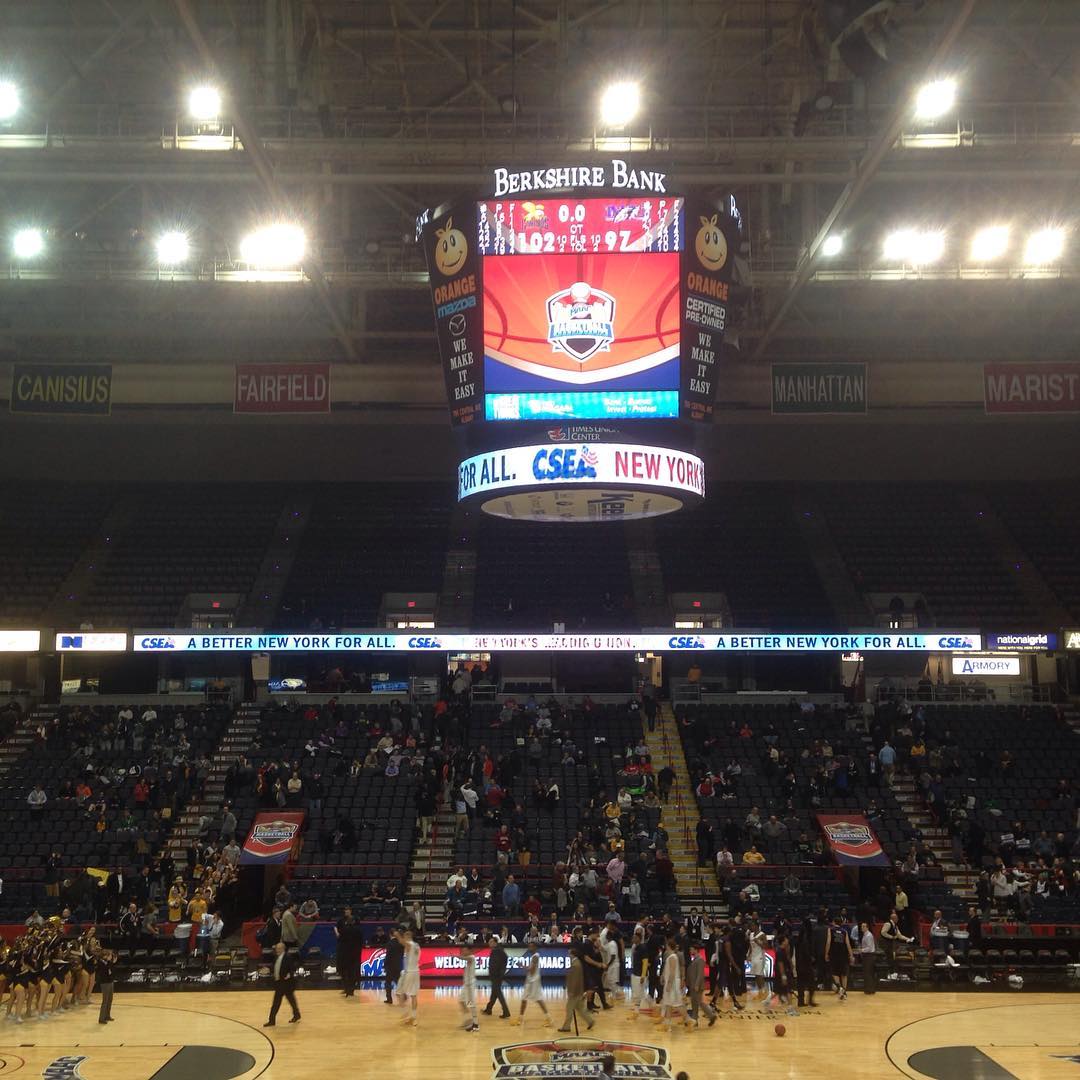The “primaries” are well underway. Super Tuesday is in the books and passionate hopefuls are jockeying for position in the general contest down the road.
No, I haven’t abandoned my longstanding resistance to writing about politics. If I hadn’t already made that decision, the wretched contest for the Republican presidential nomination this year would have put me over the edge.
My primaries relate to the craze that sweeps the land every year as the last dregs of winter give way to spring: March Madness. I cannot name another sustained sports event that so captures my interest and that of sports fanatics around the nation than the NCAA’s annual three-week men’s basketball tournament. As millions watch in arenas and from offices, homes and bars, a field of 68 men’s basketball teams is winnowed down to a Final Four before crowning a national champion on a Monday night in early April. And the fact that a little friendly wagering is involved in the form of office and other betting pools makes it even more interesting. The brackets we fill out have become so famous they gave rise to prognostications in the form of a newly minted science: bracketology.
I was invited to fill out my first bracket at work in 1986, picking winners from the newly expanded field of 64 teams (now 68). I was hooked. Almost every year since then I have watched this dazzling event play out as I follow the action in my family room or in bars with friends, clutching wrinkled papers displaying my picks. Most years, the heavy lines on my sheets reflect the dozens of losers that I had picked to win, but fell by the wayside early.
Lately, though, I have become more fascinated with the preliminary events that precede the highly rated Sunday evening show where the national tournament teams and their seedings are revealed. Most of the consistently successful college programs — Kentucky, Duke, North Carolina, Michigan State, Oklahoma, Louisville, et al — don’t have to worry too much about the automatic invitation to the tournament that comes with winning their conference championship in, say, the Southeast, Big East, Atlantic Coast, Big 10, and other so-called power or major conferences. If the teams don’t win their conference, they will usually be eligible for an “at large” bid to the tourney, based on their record and strength of schedule. They might be seeded lower, which means they play a tougher team in the first few games, but they’re still in.
My fascination is with the smaller, lesser-known conferences better known as “mid majors.” These conferences produce “do or die” battles among their member schools. If you don’t win the conference championship and the accompanying automatic NCAA bid, there is little chance you’ll go “dancing” in March, as participation in the tourney is often called.
Where else can you find a team called the Southern Illinois Salukis (so named for a speedy sight hound whose roots go back to ancient Mesopotamia, not the southerly region of the Land of Lincoln) battling for the coveted Missouri Valley Conference title? How about rooting for the Virginia Military Institute Keydets to snare a bid by winning the Southern Conference championship? And of course how could you not pant with anticipation following the South Dakota State Jackrabbits in their quest for the Summit League trophy?
These are not names that roll of the tongue of your run-of-the-mill hoops fan. Yet it is this wide-ranging field of barely known hoop squads that have given birth to so-called Cinderellas that, on a few occasions, have threatened to turn the college basketball world upside down. Most fans won’t admit it, but in 2008 they probably scrambled to the nearest search engine to find out where the heck Davidson College is when the Wildcats from that Atlantic 10 school slayed college hoop royalty enroute to the Elite Eight remaining teams, before finally losing. They’re from Davidson, N.C., of course. And be honest, who knew much about the George Mason University Patriots (Fairfax County, Virginia) or the Butler Bulldogs (Indianapolis) before they wrecked millions of brackets prior to reaching the Final Four in 2006 and 2010, respectively?
One of these mid-major conferences, the Metro Atlantic Athletic Conference, or MAAC, features a local team that has allowed me to more closely follow the run-up to March Madness. The Siena College Saints of Albany are a perennial contender, and the MAAC conference tourney is often held at the Times Union Center in downtown Albany. This year I chose to immerse myself a bit deeper in the tourney.
I make a last-minute decision to buy a session pass and head to Albany to watch three of the tourney games on a Thursday night. Large buses and cars are creeping down State Street as I arrive around 4:30 p.m. Exhaust from the buses is buffeted by a chilly wind climbing up from the Hudson River at the bottom of State Street. I join a small stream of fans — some bundled up against the cold, and others wearing shorts and tee shirts — heading toward the arena.
At the box office I score a great seat 20 rows back from mid-court. I buy a beer and settle in for the first game. There’s a sparse crowd in this 15,000-seat arena for the contest between Quinnipiac University from southern Connecticut and Rider College of Lawrenceville, N.J.
Tip-off occurs at 5:03 p.m.. There’s so little noise from the crowd I can hear the coaches shouting instructions. Urgent conversation from some of the players drifts up to my seat. “Open,” screams one player. “Cover him,” yells another. Both teams are among the lower seeds in the MAAC, meaning they don’t have great season records. The Rider Broncs came in to the tourney with a 12-19 record. The Bobcats of Quinnipiac were a little worse, winning 9 games and losing 20.
The teams battle to a near draw by the half, with the Bobcats leading by two, 32-30. Watching the play unfold, I’m reminded of what famous Indiana Coach (and chair thrower, and tantrum flinging) Bobby Knight once said: The shot fake remains one of the best plays when a team is an offense. The player with the ball acts like he’s going to shoot, but doesn’t. As he holds the ball, the defending player leaps into the air to block the non-existent shot, temporarily leaving his feet and rendering him unable to follow the fake shooter, who by now has either passed or dribbled the ball around the defender. Both teams, and others I see tonight, do this well.
As the second half begins, more fans are drifting in, but they still have their pick of the plastic blue seats with blue-orange speckled upholstery. The fan noise has increased.
Five minutes into the second half, the teams are tied again. With eight minutes left, Rider starts to pull away, leading 52-44. Broncs sophomore Jimmie Taylor from Florida is providing the spark, scoring 18 points.
During a second-half timeout, the usual fan-related contest on the court is replaced by one I’ve never seen. Two women start under one basket and race to the other, stopping to put on a shirt, then shorts, and finally over-sized shoes placed along their path. After reaching the other basket, the girls turn around and race back to where they started and must make a basket to win a prize. The crowd loves it. I can’t hear the PA announcer above the cheering, but I think Grace won.
Quinnipiac is coming back furiously, but Rider is doing a better job with offensive rebounds. Each trip down the court, they get multiple chances to shoot.
As is most often the case, the last two minutes of this or any other college basketball game are the most entertaining. Quinnipiac hits a three-point basket to make it a one-point game. But in the end Rider prevails. Quinnipiac misses a long, desperation three-point shot. Rider wins 60-57 and lives to play another game in the MAAC tournament. Quinnipiac gets ready to head back to Connecticut. It’s 6:54 p.m. now and I’m off to get another beer and some food during the 25-minute break before the second game.
Tip-off for the second game, which was supposed to start at 7 p.m., takes place at 7:21. It’s an all-western New York contest. The Canisius College Golden Griffens from Buffalo (13-18 on the season) are battling the 7-24 Niagara University Purple Eagles, from, of course, Niagara Falls. Emile Blackman of Niagara opens the scoring at 17:55 with a thunderous dunk that seems to shake the arena. Canisius’ Phil Valenti from Victor, New York, answers with a three-point basket and we’re off.
Canisus’s strength is obviously in the long-ball department. They hit a gang of three-point goals and the Griffins are up 11-2 as the Niagara coach calls a timeout just four minutes into the half. He’s shouting as his players gather at the bench.
The best timeout entertainment during this game features two men and two women in a wheel-barrowing contest from one end of the court to another. The guys win, but I’m pretty sure they cheated.
Niagara storms back. With less than six minutes left in the half, they’re up by two points. They’re paced by a player who wears the uniform number “0.” Guard Chris Barton from Pontiac, Michigan, has poured in 11 points.
The teams race back and forth. They generate brief, flickering shadows on the court, created by the strong arena lights above. A constantly changing banner of ads scrolls up and down in front of the scorer and timekeeper table. Cheer and dance squads from both teams do their best to excite the fans who have followed them to Albany. During timeouts, they put on elaborate dance routines set to music. More fans have crept into the arena.
At halftime, reached at 7:57 p.m., Canisus has come back to take a 40-36 lead.
The second half continues in much the same back-and-forth manner. A fan in front of me is reading the comics page from the local paper. I assume he’s there waiting for the third game of the night, the Manhattan College Jaspers against the Marist College Red Foxes from Poughkeepsie, an hour south of Albany. He has a long wait in front of him, as it turns out. I think about asking him how Beetle Bailey is doing, but I pass.
Midway through the second half, I can see Canisius is having trouble setting up what’s known as a pick, which allows the offensive player to better penetrate the other’s team’s defense. To set a pick, an offensive player without the ball stands where he thinks the defender covering his teammate with the ball will run. If all works as planned, the defender runs into the player who is standing still, and the player dribbling the ball is free to advance toward the basket. Several offensive drives by Canisius are thwarted when no one on the team sets a pick.
With only 50 seconds left in the second half, Canisius guard Kassius Robertson from Toronto hits a long three-point shot to tie the game at 71. Canisius has one more chance to break the tie but wastes time setting up a last shot that clangs off the front of the rim. Five minutes of overtime awaits.
The overtime action is furious, but both teams stay close. With almost no time left, Blackman of Niagara attempts a three-point shot and misses, but he’s fouled with his team down by three points. This means he gets three free throws. In a harbinger of things to come, he hits all three. Tie game. Second overtime period. And the teams who were supposed to play in the final game are left still warming up in the aisles.
The second OT period is more of the same. Some of the fans behind me, waiting anxiously to see their teams play, start muttering about a third overtime. And of course it happens. It’s 93-93 and we’re off to a rare third overtime period.
The players are tired now. The quality of play is ragged. The crowd has grown even larger, and noisier. They know they’re seeing something special.
Somehow Canisius summons a second (or third?) wind. They run off seven straight points and win the game 102-97. Both teams combined to score 199 points, a rarity in college hoop. And of course, I think, this is the type of game I expected. This is the prelude to March Madness, and I love it. The Niagara players and coaches shake hands with their counterparts, but they look tired and defeated. I feel badly that someone has to lose after such a gem of a game.
It’s after 10 p.m. now. The third game was supposed to start an hour earlier so I decide I’ve had enough. If I remain for the Manhattan-Marist game, I’ll be walking back to my car after midnight, by myself.
I zip up my ski jacket, tug my gloves tight, and head back out onto dark, frosty South Pearl street. A group of young players from a local hoop team are leaving at the same time. Coaches and parents exhort them to stay close and not run into traffic. But it’s still pretty quiet out. They don’t have to worry much.
I’m tired but breathless after witnessing the triple overtime thriller. March Madness hasn’t even started yet, and I’m excited about what this 2016 college hoop season has already showed me. It’s only March 3.
Coda on March 7: Local favorite Siena College beat Manhattan College Saturday to advance in the MAAC tourney, but ended up losing to Iona the following night. Better luck next year, Saints!




